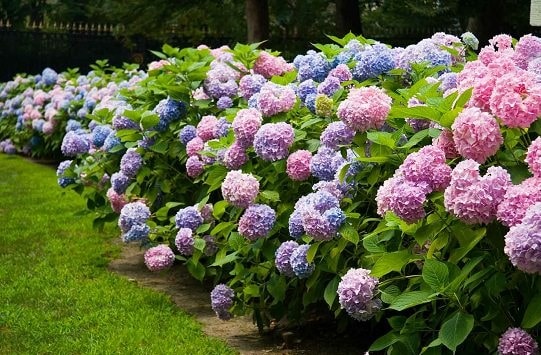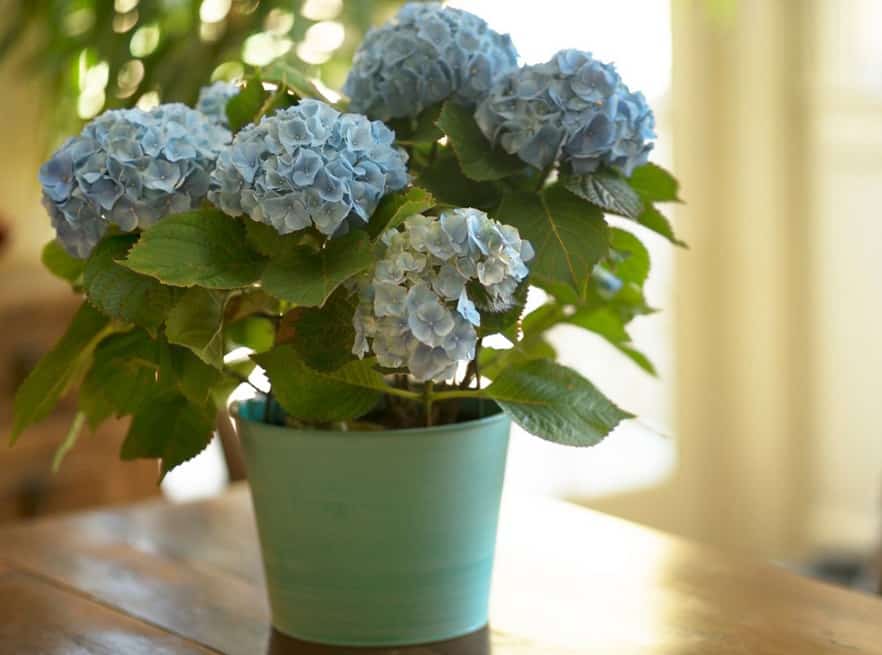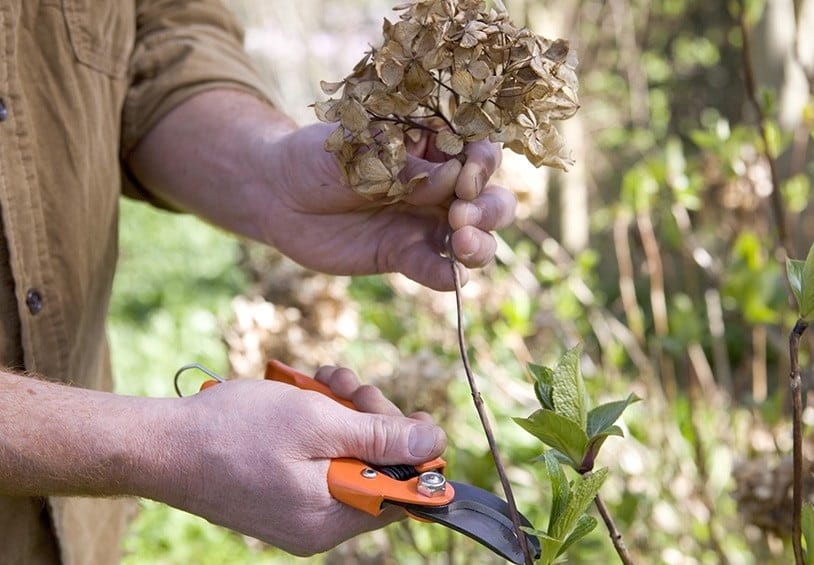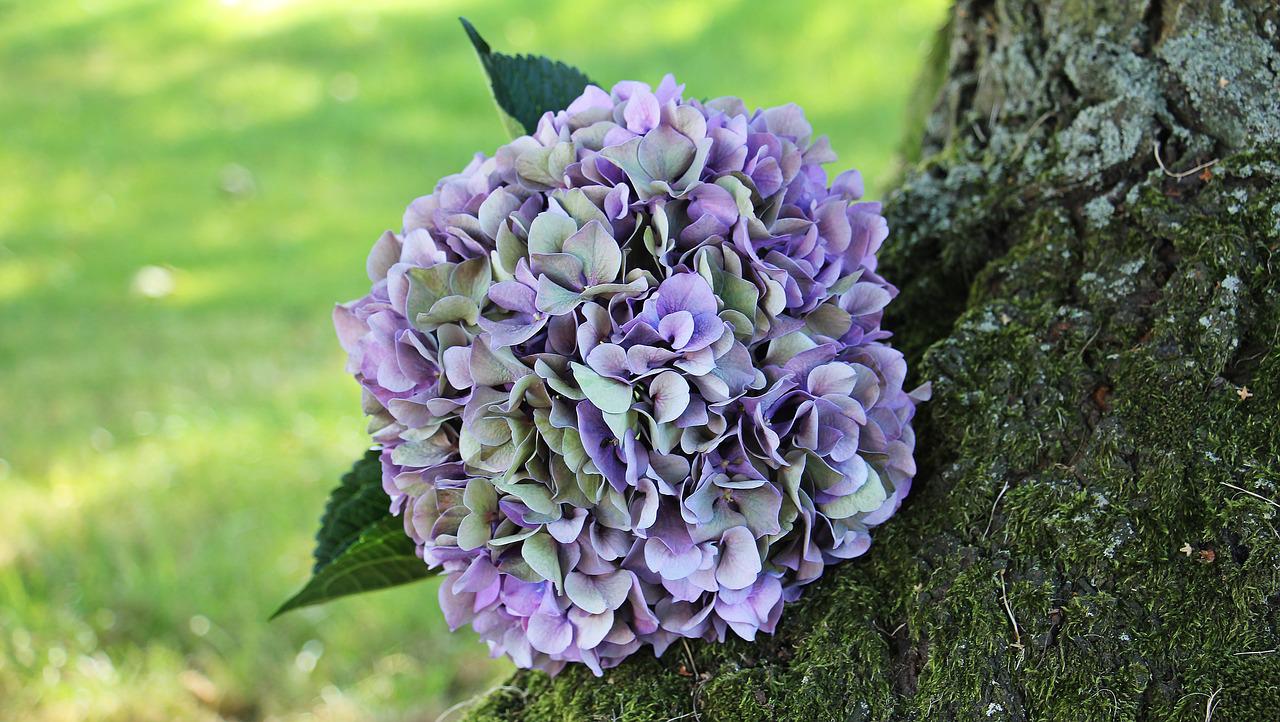A Hydrangea tree might be the most perfect species for plants.
But this plant doesn’t have just a beautiful meaning behind its name. There are plenty of reasons you want to add this to your garden’s collection.

Hydrangeas are the best bushes you can grow in your garden. They have a fast-growing time and don’t need high maintenance. They even produce vast amounts of beautiful blooms.
What is Hydrangea?
Hydrangea is a family or subgroup of plants with more than 75 other species of its type. The plant is native to Asia and America. You will find the species in utmost diversity in Eastern Asia. Mostly in China, Korea, and Japan. There are about 23 known species. They are mostly grown in gardens to show off their beautiful ball-like structure.
They are found to be both deciduous and evergreen.
Hydrangea Tree Types
The Hydrangea has many different species. But the panicle type is the best to grow a Hydrangea tree from. It has three main types to discuss, and we have enough information to guide you.
French Hydrangea/Hortensia/Mophead Hydrangea/Hydrangea Macrophylla
Mophead Hydrangea is the most predominant form of hydrangea shrubs found in gardens. It has many common names, thanks to the unique shape of its flower cluster. Some of these names include Pom-pom cluster and bigleaf Hydrangea,
These Hydrangea flowers are produced most often between early spring and the end of autumn. The flowers sold by florists and seen around most often are mainly the French Hydrangea. It is also known as Hortensia. It is cultivated worldwide because of the variety of colors available in their round flower clusters.
The available colors include rose, lavender, blue, and, sometimes, even white. The color variety depends on a particular condition. That is the acidity of the growing method. The flower turns out to be rose-colored because the soil acidity is somewhere between neutral to low. If the soil has stronger acidity, the hydrangea flower turns blue.
Hydrangea Paniculata Grandiflora/Peegee Hydrangea
The Peegee hydrangea is a species that grows into a Hydrangea Tree. The Hydrangea paniculata ‘Grandiflora‘ or the Panicle type Hydrangea is also known as the Hydrangea. It grows to 9 meters and is found in natural landscapes. It has flower clusters that taper over each other that only adding to its beauty.
This type grows into an elliptical shape and is toothed. It also has green-colored leaves that bring out the beauty of the pyramid, like shaped flower panicles. These panicles are about 7 inches long and have a pretty off-white-colored gathering of blooms. The creamy blooms pick up a pink color hue during fall.
Between midsummer to the end of fall, these blooms grow so much in size that they start bending the branches over. During the same time, its dark green leaves change their color first to yellow and then to reddish-purple. This hydrangea tree is heat and tolerant and loves well-drained soil. The soil must also be rich and have medium moisture.
It thrives in an urban environment with good humidity.
Lacecap Hydrangea
The peegee hydrangea might be the most popular hydrangea tree, but the Lacecap Hydrangea is definitely a deserving competitor. It is another beautiful type of species from the hydrangea group. It has a rather delicate blossom, unlike its more famous relative. It is just as easy to grow as the Peegee Hydrangea.
The big difference between the mophead hydrangea and the lacecap Hydrangea is that the former has more round-shaped flower gatherings. Whereas the lacecap hydrangea blooms have more of a flat cap resemblance with ruffled borders.
The ideal place to grow the lacecap hydrangea tree would be a place partly full of sunlight and partly full of shade. Just like the mophead hydrangea tree, this tree also requires adequately draining soil.
Tips for Growing, Caring, and Planting Hydrangea

Hydrangeas are truly magnificent. But in order for them to manifest their beauty, you need to plant them well.
What is the best time to plant?
There is no better season than fall for you to plant a hydrangea tree. Even early spring is good enough to plant hydrangeas. The reason is simple. When you plant them during these seasons, there’s enough sunlight and adequate humidity for the plant to develop strong roots before blooming.
If you are looking for the best time during the day to plant, it would be the cooler parts. This includes the early morning and late afternoon timings. These timings are the cooler parts of the day. Due to this, the hydrangea tree has enough protection from excess sun. It is advisable to water a newly planted hydrangea sufficiently before it starts growing.
Where can you plant hydrangeas?
It is an essential first step to decide where you will plant the shrub. Everyone has their priorities when it comes to the location of their plants. People mostly prefer hydrangeas next to their beds or close to their homes. Hydrangeas are attracted to the morning sunlight and dislike the strong heat in the afternoons.
Therefore, planting them in cooler places with sheds or other shade mediums is advisable. The north or south side of your house is the most ideal place for adequate sunlight. Be sure not to plant the shrub directly under another tree. This leads to limited sunlight supply and improper distribution of water and nutrients.
What kind of soil should you use?
A hydrangea tree will grow best in soil that has good amounts of organic material. Well-draining soil helps too. Even though they prefer growing in soil with a lot of moisture, they dislike being overflowed with water. If the oil is too watery, it can cause the roots to be rotten.
To improve the soil quality that has become heavy, you can add extra amounts of compost.
How to plant?
When your about to plant, remember to dig the hole 2 feet wider than the size of the root ball. The depth of the hole should also be fitting for the size of the root ball. You can also create a small mound to help with the water drainage.
How to breed Hydrangea?
Through a very simple technique, you can easily breed your one hydrangea tree into many. Here’s how you can breed hydrangea trees.
How to care?
In order to see the best result of your plant’s growth, you need to look after it well. You don’t have to worry much, though. Even though hydrangea tree looks high maintenance, they’re not delicate to the point where you have to invest your personal time. It is fairly easy to look after them. Here are some tips on how you can care for a hydrangea tree.
You should water the plant at the rate of at least 1 inch per week. Do this for the entire growing phase. After that, start watering the plant deeply. At least 3 times a week for better root growth. All the species of the Hydrangea family-like consistent moisture.

You can use a soker hose to keep the moisture away from the flowers and the leaves. It also helps to water the plant deeply. During hot days, hydrangea trees often wilt away. To avoid this, you must water the plant in the morning when sunlight is weak.
Add a bit of extra compost under the plant to add moisture to the soil. Organic manure is recommended. Over the course of time, it breaks down into nutrients and nourishes the soil. It also adds texture to the soil.
It is absolutely important to use fertilizer while growing hydrangea plants. Every breed has its priorities and can benefit from proper usage.
Bigleaf Hydrangeas require a number of light fertilizer uses in March, May, and June. Panicle Hydrangeas require fertilizer twice during April and June each. Smooth Hydrangea requires just one use of fertilizer at the end of winter.
Pests don’t usually attack hydrangeas. But in rare occasions where the plant is stressed, you find pests. So the best way to keep pests away from a hydrangea tree is to maintain it well.
When to prune Hydrangea for best bloom?

Almost every person who grows hydrangeas has their doubts about pruning them. Hydrangea species normally start budding on old as well as new wood. But if you find that your hydrangea tree isn’t blooming, it is probably because of mismanaged pruning. Post blooming is the most suitable time for you to prune you Hydrangea.
This gives it enough time for new growth and solidification before entering winter.
You can prune them till the back is complete. During the last days of winter or when springs are just starting, pruning the shrubs to the ground is possible and ideal. If you follow these steps for smooth hydrangeas, they produce comparatively bigger blooms. Still, most gardeners choose to cater to smaller blooms. This is because they will be sturdier on thinner stems.
Sometimes what happens is that the branches of the hydrangea tree cannot withstand the weight of the blooms and fall off. Often, heavy rainfall is also to blame for this happening. What you can do in such situations is cut the stems to a smaller size. Somewhere between 18-24 inches. This makes the stems sturdier during new growth.
The volume of blooms from the plant depends on the pruning. More aggressive pruning tends to reduce the number of buds but increases their size instead. Mild pruning can lead to a smaller size but a bigger number of blooms.
In some cases, the shrub might start blooming during new growth. Therefore they should be pruned before the active blooming starts. That would be during the last days of winter or early spring. Please note that this is the case for species like Limelight, Quickfire, and Burgundy. However, even Peegee, which grows big white buds, can also be pruned in late winter.
The majority of the other hydrangeas should be pruned after they are done blooming. This would be in summer. When they bloom on branches and stems, it is called old wood. It means the plant’s growth has gone through in the past year.
How to transplant Hydrangea?
Transplanting hydrangeas is important otherwise, they might cause problems for other plants in your garden. Here are some tips for transplanting hydrangeas.
- The first necessary step for transplanting a hydrangea tree is to find the right time. It is advisable to do so in winter. You should wait until they have bloomed completely, including the flowering process. Also, check if they have gone to sleep and finished their job for the rest of the year before you decide to change their location.
- The next important step is to find the right place where you are going to transplant the hydrangea tree. Preferably, a place that doesn’t face excessive sunlight would be most suitable. This is because hydrangeas like just the right amount of the sun and not more or lesser than required.
- As mentioned earlier, your home’s north or south side works well. Also, make sure the new place can take in the size of the root ball.
- Digging cautiously is the next important step while transplanting the hydrangea tree. You must carefully make accurate cuts around the plant before digging it out of the earth.
- Taking out the plant with the root ball may be difficult since it might be heavy because of the dense roots and moist soil. So ask someone for help if necessary.
- Finally, the last but most important step is to plant it correctly. Again, remember that the hole you dig for the plant must be fitting enough for the root ball.
Tips after transplanting:
When a hydrangea is transplanted after blooming completely, it requires deep watering. Use a hose and soaker to water the plant nicely and avoid excess moisture reaching the leaves and the stem.
Observe it. They require extra care after transplanting, especially during the hot months of summer. Be sure to water them on time and adequately during summer.
FAQs
Do dear eat Hydrangea?
A deer will eat hydrangea plants only if hungry. It also depends on the type of Hydrangea.
How much sunlight does Hydrangea need?
6 hours of sunlight in a day is the best amount that a hydrangea tree will need.
Can I grow Hydrangea in a pot?
Yes, you can grow hydrangeas in a pot. Hydrangeas in a pot mostly fail to thrive because they are kept indoors for an incorrect period. Insufficient sunlight is mostly responsible for them wilting away.
Is Hydrangea poisonous to dogs?
If dogs consume a certain amount of Hydrangea, they may show symptoms of vomiting and diarrhea.
How fast does a hydrangea grow?
Hydrangeas under normal conditions and good caretaking grow fast. They grow at an average rate of 2 feet or more per year.
How long does Hydrangea bloom?
Hydrangeas bloom for about a week or two.
Is Hydrangea perennial?
Hydrangeas normally grow between hardiness zones 3 and 7 as perennials.
How to make hydrangea pink?
You can turn the blue Hydrangea to pink by extracting aluminum from the soil. You can do this by adding garden lime to the soil. This increases its pH level. Do this every two months during the plant’s growing period.
Why is my Hydrangea wilting?
One of the most common reasons for the hydrangea plant wilting is excessive moisture in the soil. This causes the roots to start rotting, and the shrub wilts.
